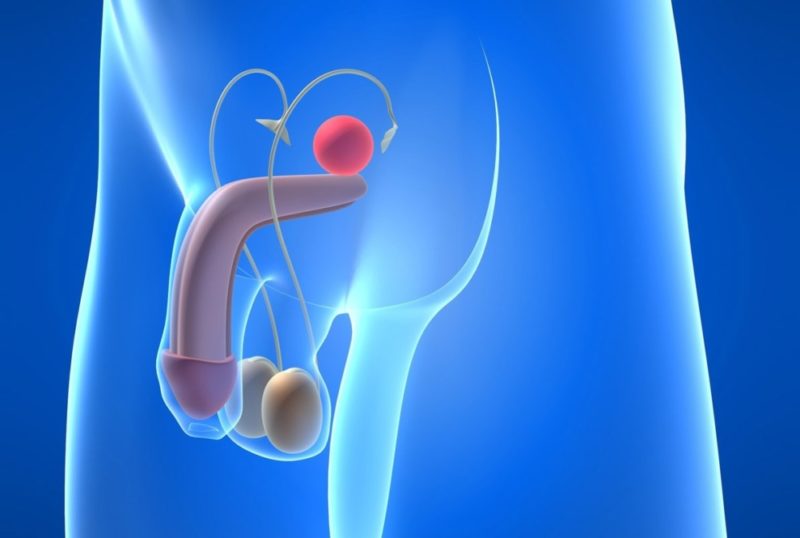Not all modern couples dreaming of a child succeed in conception. Moreover, the inability of a woman to become pregnant is not always associated with the problems of her reproductive system. An azoospermia that can disrupt all plans of potential parents often becomes an obstacle to the desired event.
Material Content:
What is azoospermia
Azoospermia - what is it, and what is the danger of such a diagnosis?
Azoospermia is a violation of spermatogenesis, manifested in the absence of sperm in the seminal fluid. This typically male disease, as a rule, does not affect the process of ejaculate excretion, but only affects its composition.
Note. Azoospermia is diagnosed in 10-15% of men in childless couples.
Causes of the appearance of pathology
The main questions asked by a doctor with men with a similar diagnosis, of course, relate to the causes of azoospermia. There are many factors affecting this condition. The following main varieties of the causes of azoospermia are distinguished.
Diseases of other organs.This includes:
- Problems with the hypothalamus. It is he who is responsible for the release of hormones, in particular, genital.
- Pathology of the pituitary gland. The latter obeys the hypothalamus. Alcohol, drugs, tumors, hemorrhages inhibit the work of this department.
The problem with the structure and functionality of the testicles.These include:
- Radiation exposure, the effects of alcohol, nicotine, drugs.
- Genetic chromosomal abnormalities.
- The damaged structure of the seminal canals (congenital or acquired due to the influence of various infections).
- Undescended testicle (cryptorchidism).
- The absence of testicles.
- Inflammation of the testicle, its injury.
- Violations of the functionality of the excretory duct.
Problems with the "supply" of male cells directly to the semen. Develop as a result of:
- Congenital disorders of the vas deferens.
- Cystic fibrosis (a genetically caused disease affecting the metabolism).
- Spinal cord injuries, etc.
- Infectious effects (tuberculosis, gonorrhea, chlamydia).
- The performed resection of the prostate.
- Diabetes mellitus.
In some cases, the absence of sperm can be triggered by several factors of different groups. For this reason, doctors recommend men to undergo a thorough examination of the whole body.
Types of disease
The following varieties of azoospermia are distinguished:
- Obstructive azoospermia. With this diagnosis, patency of the ejaculatory canal is difficult, and sperm are not delivered from the testicles to the final destination - the penis. It is this type of pathology that accounts for 40% of cases of azoospermia.
- Secretory azoospermia. Diagnosed more often than obstructive, characterized by impaired sperm formation. During ejaculation, sperm is excreted from the penis, but it is deprived of male cells or their number is extremely small (another option - they differ in immobility).
- Combined. It appears if the patient has symptoms of both secretory and obstructive azoospermia.
Note. Congenital azoospermia is obstructive or secretory. However, these varieties of the disease can also be acquired.
Symptoms of azoospermia
The basic symptom of azoospermia is the impossibility of conception while maintaining sexual function.
Other symptoms that follow directly from the underlying pathology include:
- Hypogonadism. In a man, underdeveloped secondary sexual characteristics are tracked (poor hair growth, body type according to the female type, etc.).
- With secretory azoospermia in men, parallel testicular hypoplasia, the formation of micropenis, the development of impotence or a strong decrease in erectile function are often formed in men.
- Obstructive azoospermia often provokes scrotal edema, discomfort, and pain in the testicles.
With an obstructive form, the male testicles themselves are typical in size, but their appendages are enlarged due to the massive accumulation of sperm.
Diagnostic measures
The main method for diagnosing azoospermia is semen analysis (spermogram). When at least single cells are monitored in a given sample, the diagnosis of azoospermia is refuted.
To obtain a reliable research result, a man is recommended to adhere to a number of preparatory recommendations:
- During the week before the analysis, it is not recommended to take hot baths, visit a sauna and a bath - at high temperatures, male sex cells die.
- 3 days before the study, it is useful to refrain from intimacy.
Note. A one-time study is not effective. The diagnosis of azoospermia can be confirmed only after 2-3 tests. If the specialist is overwhelmed by doubts, the ejaculate is centrifuged. This allows you to identify special sperm cells in semen.
Together with the analysis, the doctor must certainly examine and palpate the genitals of the patient, in particular, to identify whether there are swelling or atrophy of the testicles.
Treatment methods
After a man receives an answer to a question about the causes of azoospermia, another problem begins to torment him - is this disease being treated or not?
Treatment of azoospermia depends on the characteristics of the disease:
- If the problem is provoked by a violation of the ducts, the patient is often offered an operation to expand or correct them.
- When there is a genital infection or inflammation of the testicle, it is enough to consult a venereologist to eliminate such problems. Most often, treatment in such cases will be medication.
- If the integrity of the testicular tissue is impaired, the doctor offers the man a biopsy procedure. This will help determine the patient’s fertility and highlight active sperm cells, even for IVF.
It is interesting. In modern men, against the background of illness and stress, the so-called temporary azoospermia occurs. In such cases, the hormonal system malfunctions and the imbalance of sex hormones occurs. This problem is solved by eliminating the underlying disease. Often, a patient is prescribed a course of hormone therapy.
Forecast for Paternity
Not always azoospermia acts as the cause of male infertility. So, with an obstructive form, there is a favorable prognosis for future paternity.
With timely diagnosis and therapy, fertility can be restored in 65% of patients. If the disease is congenital, the prognosis is not so rosy. Men with a similar diagnosis are recommended a testicular biopsy, from which viable cells are directly extracted. After cleansing, they are frozen so that they can subsequently fertilize the egg using the IVF procedure. If traces of sperm are not monitored in the tissues of the testicles, the way out will be the fertilization of the egg by donor sperm.
Thus, male pathology, called azoospermia, often becomes an obstacle to creating a full-fledged family, destroying marital relations. Fortunately, the need for donor fertilization does not occur too often.
















